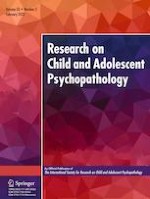10-08-2020
Maternal Emotion Dysregulation Predicts Emotion Socialization Practices and Adolescent Emotion Lability: Conditional Effects of Youth ADHD Symptoms
Gepubliceerd in: Research on Child and Adolescent Psychopathology | Uitgave 2/2022
Log in om toegang te krijgenAbstract
Maternal emotional functioning and emotion socialization practices can facilitate or hinder children’s emotional development, and youth with symptoms of attention-deficit/hyperactivity disorder (ADHD) are at increased risk for emotion lability. However, little is known about the independent and interactive effects of maternal emotion dysregulation and adolescent ADHD symptoms on maternal emotion socialization and adolescent emotion lability over time. Using secondary data analyses of a longitudinal community sample of youth and their mothers (Nbaseline = 247; 43.7% female), the current study examined direct and indirect effects of maternal emotion dysregulation on adolescent emotion lability via supportive and non-supportive emotion socialization practices as mediators, and the extent to which adolescent ADHD symptoms moderated these longitudinal pathways. Mothers reported on all study constructs. Results showed that non-supportive parenting responses to adolescents’ negative emotional expressions partially mediated the association between maternal emotion dysregulation and adolescent emotion lability, and the effect was stronger at higher levels of youth ADHD symptom severity. Results suggest that parent- and youth-level characteristics interact to confer risk for non-supportive emotion socialization practices and adolescent emotion lability. This research contributes uniquely to theory and research on ADHD and emotional functioning across adolescence. Future research should extend this work by utilizing multi-modal assessment.
